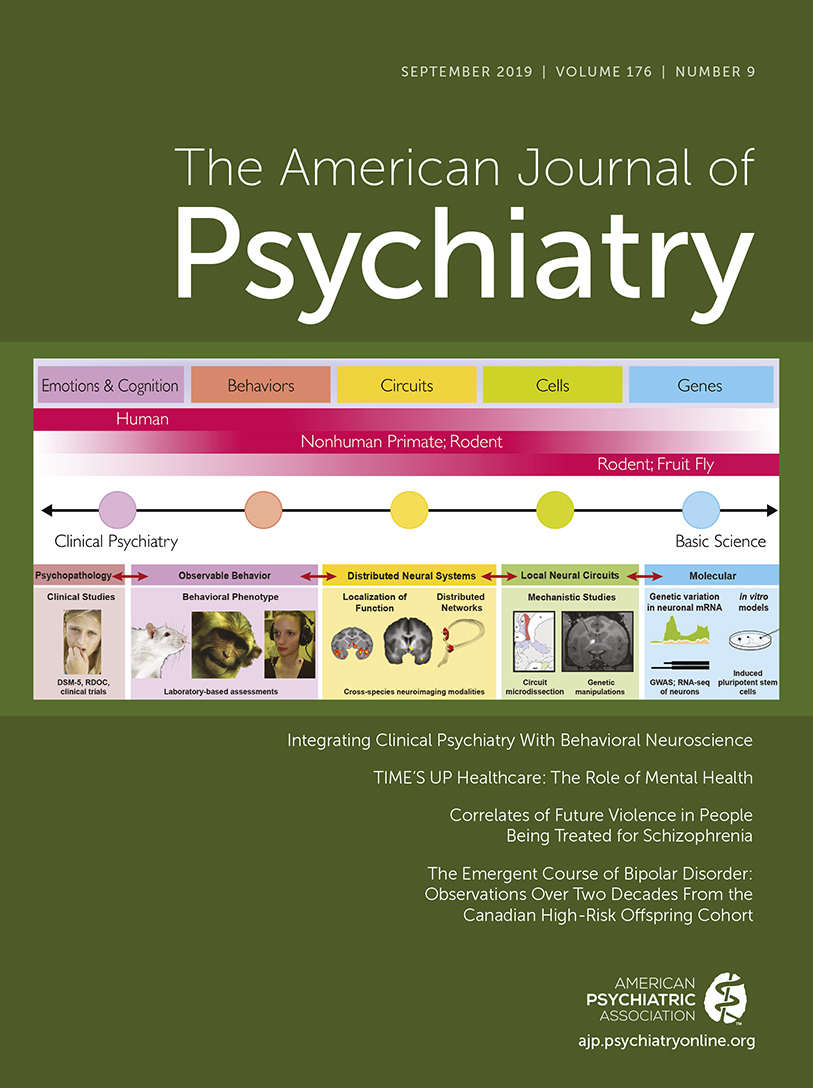Prediction of Onset of Substance-Induced Psychotic Disorder and Its Progression to Schizophrenia in a Swedish National Sample
Abstract
Objective:
The objective of this study was to clarify the etiology of substance-induced psychotic disorder and its progression to schizophrenia in a Swedish national sample.
Methods:
Individuals with a registration of substance-induced psychotic disorder between 1997 and 2015 in national medical registries (N=7,606) were followed up for a mean of 84 months. Data from medical, criminal, and pharmacy registries on first-degree through third-degree relatives were used to calculate familial risk scores for nonaffective psychosis, drug abuse, and alcohol use disorder.
Results:
Individuals with substance-induced psychotic disorder had large elevations in standardized familial risk scores for drug abuse (+1.09, 95% CI=1.02, 1.15) and alcohol use disorder (+0.98, 95% CI=0.93, 1.03) and modest elevations for nonaffective psychosis (+0.35, 95% CI=0.30, 0.41). The cumulative risk for progression to schizophrenia was 11.3%; it was lowest for alcohol-induced and highest for cannabis-induced psychotic disorder, and it was predicted by early age at diagnosis of substance-induced psychotic disorder, male sex, and further registrations for episodes of drug abuse, alcohol use disorder, and substance-induced psychotic disorder. A risk prediction model found that 47% of individuals who converted to schizophrenia were in the upper 20% of risk. Familial risk scores for drug abuse and alcohol use disorder did not significantly discriminate those who converted to schizophrenia from those who did not, while familial risk score for nonaffective psychosis did (0.67, 95% CI=0.40, 0.95, versus 0.33, 95% CI=0.28, 0.39). Familial risk scores for nonaffective psychosis were indistinguishable between individuals with schizophrenia with and without prior substance-induced psychosis. Assignment of early retirement by the Swedish Social Insurance Agency strongly discriminated between individuals with substance-induced psychotic disorder with and without later schizophrenia.
Conclusions:
Substance-induced psychotic disorder appears to result from substantial drug exposure in individuals at high familial risk for substance abuse and moderately elevated familial risk for psychosis. Familial risk for psychosis, but not substance abuse, predicts progression from substance-induced psychosis to schizophrenia. Schizophrenia following substance-induced psychosis is likely a drug-precipitated disorder in highly vulnerable individuals, not a syndrome predominantly caused by drug exposure.



